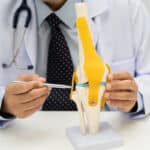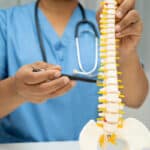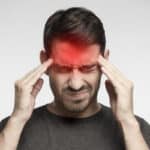
Pain is a rather frequent ailment. Pain becomes increasingly common as people age, and women suffer more than males to be in pain. Here we will discuss pain management techniques without medicine.
Different types of pain
There are two sorts of pain: acute and chronic.
-
Acute pain is a common reaction to an injury or illness. It usually begins abruptly and lasts only a few minutes.
-
Chronic pain that lasts longer than expected to recover. It usually lasts for more than three months.
Pain can range from a faint ache to a sharp wound, and it can be minor to severe. You may experience discomfort in only one portion of your body or throughout your entire body.
Pain treatment techniques
According to research, a person’s mental well-being might influence how they perceive pain. Understanding the origin of your pain and learning effective pain management techniques can help you improve your quality of life. The following are some of the most important pain management strategies:
-
Psychological therapies
-
Pain medications
-
Strategies for the mind and body
-
Support groups in the community
Pain causes
The following are the most prevalent causes of pain in adults:
-
Injuries
-
Medical problems (such as cancer, arthritis, and back problems)
-
Surgery
The effects of pain on the body
Pain is a multifaceted defense mechanism. It’s a necessary aspect of growth that protects the body from danger and harm. Pain receptors are coupled to two nerve types that threat t in the body. One type of neuron transmits information swiftly, resulting in acute, immediate pain. The other sends messages slowly, resulting in a throbbing, dull ache.
More pain receptors exist in some parts of the body than in others. Because the skin contains so many receptors, it’s simple to pinpoint the specific place and type of pain. Because the gut has fewer receptors than the rest of the body, pinpointing the exact stomach ache location is more difficult.
When skin pain receptors awake in contact with touching anything harmful, like something sharp or hot, the nerves send signals to the spinal cord and then to the brain thalamus.
The spinal cord occasionally transmits an immediate signal to the muscles, causing them to contract. This transfers the damaged bodily part away from the risk or injury source. This is a protective reflex that avoids additional injury. It occurs before the onset of pain. The thalamus sorts the information the nerves deliver once it reaches it, considering the earlier occurrence, expectations, beliefs, culture, and social conventions. This explains why people react to pain in such disparate ways.
The information is then sent to other areas of the brain associated with physical response, thinking, and emotion by the thalamus. This is when you may experience discomfort and become irritated. The thalamus is also involved in mood, explaining why your mental state influences your pain perception.
Pain management without the use of medications
There are a variety of non-pharmaceutical remedies available to assist you in pain management. It is often more successful to use a variety of treatments and therapies rather than just one.
Non-medical alternatives include:
-
Hot or cold – ice packs should be used as soon as possible after an accident to minimize swelling. The heat packs are more effective at relieving chronic joint or muscle pain.
-
Physical therapy, such as stretching, walking, strengthening, or cardiovascular exercises, can help you manage pain, stay mobile, and improve your mood. To avoid overdoing it, you may need to increase your workout gradually.
-
Massage is a type of physical treatment that is best for soft tissue injuries, and this must be avoided if joint pain is present. According to some research, massage may help control pain, but it is not advised as a long-term treatment.
-
Techniques for relaxation and stress management, such as meditation and yoga.
-
Cognitive behavior therapy (CBT) this psychological therapy type can aid you in learning to change the way you think about pain and, as a result, the way you feel and act about it. This is an effective method for learning to manage chronic pain independently.
-
Acupuncture is a type of treatment used in Chinese traditional medicine. Acupuncture is a technique in which fine needles are inserted into particular spots on the skin. Its goal is to restore body equilibrium and facilitate healing by freeing natural pain-relieving chemicals (endorphins). Acupuncture helps some patients lower their pain level while still allowing them to function. However, there is no definitive research on acupuncture’s effectiveness in treating pain.
-
Transcutaneous electrical nerve stimulation (TENS) therapy at low-voltage electrical currents are passed into the skin via electrodes, causing the body to respond with pain relief. The use of TENS for the treatment of various chronic pain problems is not backed up by enough published research. However, some persons with chronic pain who have failed to respond to conventional treatments may benefit from this medication. Your doctor or another healthcare professional can help you figure out which therapies are best for you.
Ask us at Oklahoma Spine & Pain Management, our pain management doctors would assist you in relieving pain.
**Disclaimer: This content should not be considered medical advice and does not imply a doctor-patient relationship.






